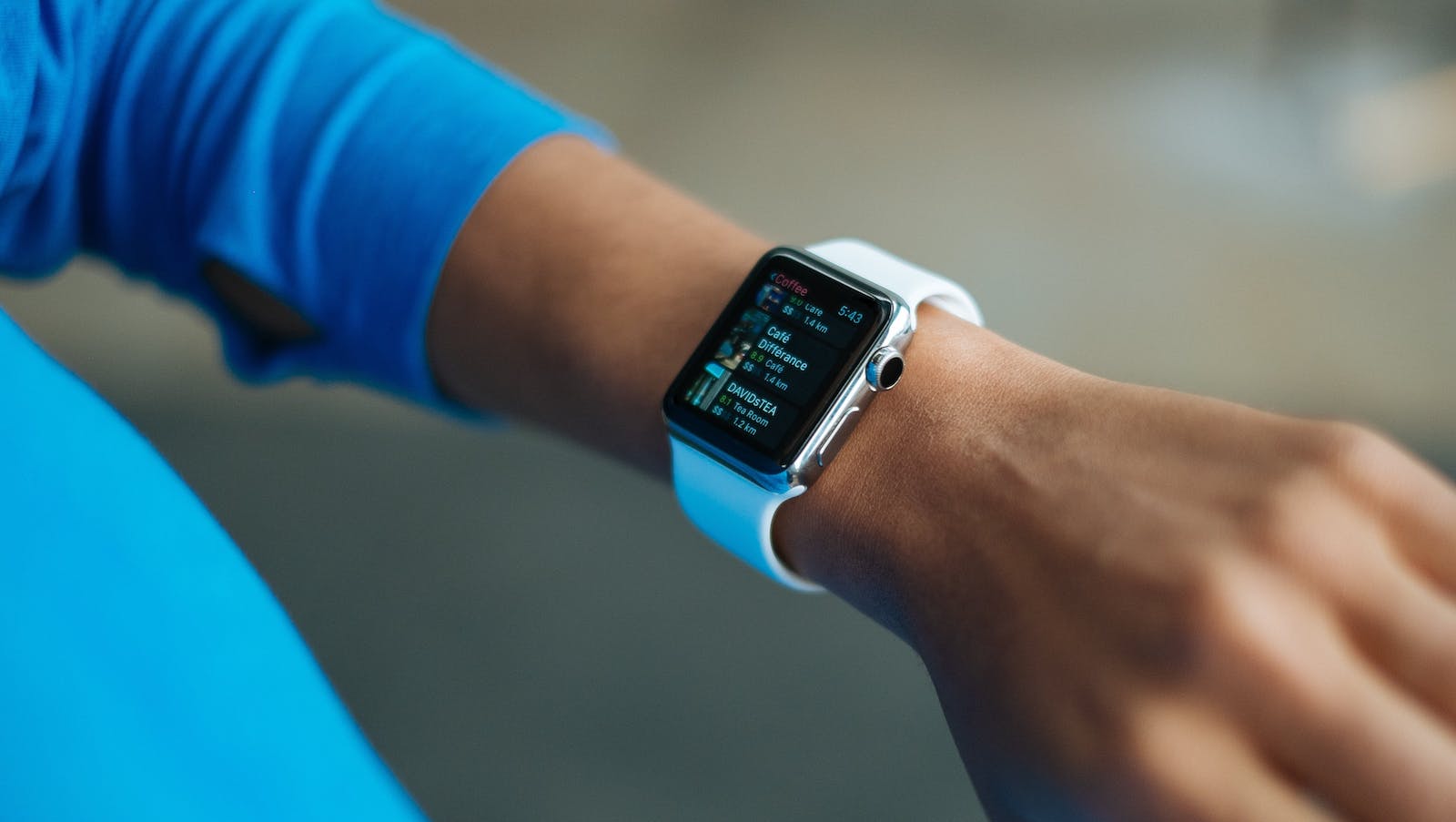Wearable technology has proven useful for tracking employee health and monitoring workplace conditions. The devices can lead to healthier, happier and more productive workforces, which could significantly reduce workers’ compensation claims.
What is the potential of wearable technology? How much can it affect workers’ comp and risk management? Here’s everything you need to know about the current situation and coming challenges of wearable tech integration in the workplace.
How Wearable Technology Improves Worker Safety
Wearable technology primarily functions through microprocessors connected to the internet that collect and sync data with other electronics. It comes in many shapes and sizes, from small rings to helmets and other protective equipment. Here are some common examples of wearable devices in various industries:
- Smart jewelry: Smartwatches, wristbands, rings and necklaces track many key health metrics, including steps, calories burned, resting heart rate, blood pressure, sleep quality and even stress levels.
- Smart clothing: Smart clothing covers a larger area of the body, giving employers more insights into the health of their workers. There are smart shoes that monitor walking and running form, socks that can detect developing foot lesions and t-shirts that monitor breathing patterns and muscle tension.
- Exoskeletons: Workers in construction, warehousing and other dangerous industries can wear upper-body exoskeletons that improve mobility, reduce discomfort and lower the risk of injuries.
- Head-mounted displays: HMDs use virtual or augmented reality to immerse the wearer in a 3D online environment. This function is extremely useful for training employees in technical fields such as nursing and metal fabrication that have little margin for error.
- Implantables: Implantable monitoring devices are now available in microchips that allow constant supervision of employees with underlying health risks, such as seizures and asthma attacks. Automated supervision leads to faster reaction times in an emergency.
All these devices play the same important role — tracking employee health and preventing accidents through biometrics. Sometimes, this role is as simple as fixing an employee’s posture, while other times it requires more detailed health information. The greatest example is identifying and addressing the causes of chronic health conditions.
According to the Centers for Disease Control and Prevention (CDC), chronic conditions such as obesity, heart disease and diabetes make up 90% of all healthcare costs in the U.S. These issues largely stem from unhealthy lifestyles and work habits. Wearable technology can help employees eliminate their bad habits and create a strong health and safety culture.
A 2019 systematic review of these devices found people who used them became more physically active, and wearables were more effective than traditional lifestyle interventions. The reason is simple — the appliances keep people informed, hold them accountable and make their health a top priority.
Wearable technology also has a strong psychological impact. These devices act like digital doctors and personal trainers, helping users make informed health decisions and providing constant encouragement. As all risk management professionals know, raising awareness is the first step in addressing any workplace hazard.
Wearable technology fills another key role — data organization. Growing businesses must keep employee health info on a central online platform to ensure fast and accurate insights when new health risks arise. Wearable devices can connect to any credentialed worker’s computer or mobile phone in a customized format.
See also: A 20-Year Outlook for Employee Benefits
Impact on Workers’ Compensation Claims
The information wearable technology provides can affect workers’ compensation in several big ways. These devices can help companies identify hazards through predictive analytics and algorithms and prevent accidents from happening in the first place. Fewer accidents equal fewer claims.
For example, wearable proximity sensors know when employees are working with or around heavy machinery, dangerous chemicals, unstable platforms and other dangerous areas. They can also identify the presence of workers nearby. Making employees aware of these hazards is crucial for avoiding accidents and injuries.
A 2021 study of wearables in the hospitality industry showed a 50% to 60% decrease in injury frequency in hotel environments with high rates of strains and sprains. The devices limited the frequency of risky employee behaviors and helped them avoid dangerous situations in the first place. The devices act as a form of proactive workers’ comp, rather than reactive.
If an accident happens to occur, the real-time data collection of wearable devices leaves little room for interpretation during the investigation. They can identify if the employee was practicing unsafe behavior, if a specific workplace hazard was to blame or if the injury was just a freak accident. All three outcomes are accounted for.
In other words, wearable devices provide the necessary documentation to settle workers’ comp claims before any legal action is taken. It streamlines claims processing by providing objective data-driven assessments of both parties. By showing who or what was truly at fault, wearables contribute to more accurate injury assessments and financial compensation, if necessary.
Wearable technology can help companies facilitate more effective rehabilitation programs for sick and injured employees. Employers know the precise reason for the accident, so they know which workplace policies or training modules to update. Wearables can also monitor the employee’s rehabilitation, give health advice and maintain morale.
Potential Returns of Wearable Technology
The health and safety benefits of these appliances are impressive, but are they worth the investment? The answer depends on a few factors, starting with the devices' costs. Smaller offerings like smartwatches and rings usually cost a few hundred dollars each, but a more advanced device can be a significant investment.
For example, the latest Apple Watch Ultra 2 — designed for outdoor work environments — has a price tag of $799. A full-body exoskeleton for high-risk working conditions costs between $70,000 and $85,000, while smaller exo-vests cost around $7,000. The latest VR and AR headsets from Apple and Microsoft are expected to retail for $3,500 in 2023.
Of course, the down payments on each device are just the beginning. You must also pay for subscriptions to health and wellness applications, employee training and long-term maintenance. Wearable devices might help people avoid accidents on the job, but they can still get damaged in the process.
Next, you need to weigh these costs against the potential returns. Wearables might be expensive to install and maintain, but they can lead to great long-term savings in risk management. With fewer illnesses and injuries, less money goes toward clean-up efforts, new training materials and rehabilitation programs.
Research from the Journal of Medical Research also indicates that wearable monitoring can lead to yearly savings between $500 and $1,000 per employee. These savings come from fewer hospital visits, improved medication adherence and better chronic disease management. One device maker claims a 50% decrease in claims costs and a 72% decrease in missed work days.
Investor interest is usually a good indicator of a product’s cost-effectiveness, and the market for industrial wearables is projected to cross $8.63 billion by 2027, with an annual growth rate of 15%. This growth is a good sign, though not a guarantee that wearables will pay off in the long run.
See also: Highlights on New Workers' Comp Rules
Challenges and Concerns
Although the reported annual savings and decreases in workers’ comp claims look promising, there is a problem with these statistics. Wearable monitoring might be able to save companies up to $1,000 per employee, but how long will the benefits take to accumulate? It’s true that wearables promote healthy habits and lifestyles, but these changes don’t happen overnight.
For example, a 25-year-old warehouse worker who eats poorly and puts his body at risk won’t feel the effects of his unhealthy lifestyle for many years. He seems like the perfect candidate for a wearable fitness monitor, but how long would it take to see the positive effects? There is no magic number, but it takes an average of six months to solidify a new health routine.
The wellness claims share the same core problems. The evidence — while compelling — is largely anecdotal and doesn’t cover a long enough timeline. It may take a business years to see tangible returns from investing in wearable monitoring devices. Additionally, the benefits are bound to vary because the employees will use the devices differently.
Aside from the uncertain claims about a strong ROI, another great challenge facing the growth of wearable technology is its reliability. Accuracy can widely vary by developer and give inconsistent results. Most models provide accurate step counts and heart rate measurements, but more difficult metrics such as breathing patterns and sleep quality aren’t so dependable.
Inaccurate data is just one potential technical issue. The devices can also trigger false alarms. For example, an employee who has asthma could accidentally activate their smart shirt’s respiratory monitor after coughing. False alarms lower the workforce’s sense of urgency and might cause a delayed reaction in a real emergency.
Businesses must also be aware of any updates with the Occupational Health and Safety Administration. Certain wearables that qualify as medical devices could become required in the near future. Cardiovascular and respiratory devices are the most likely to become mandatory, especially in the healthcare industry.
As with any new monitoring system, employees might have some privacy concerns. People naturally don’t like the idea of constant monitoring and data collection on the job. However, brands can alleviate these concerns by being transparent. Improving cybersecurity and establishing limits on the use of personal data are key steps in wearable technology integration.
See also: Top Employee Incentive Trends for 2024
Future of Wearable Technology Still Uncertain
There is strong evidence wearable technology can reduce workers’ compensation and healthcare costs. Market activity is ramping up, and wearables are becoming more commonplace in high-risk industries. However, the future of this technology still has some uncertainties. Consider the financial, legal and ethical implications of a long-term investment before making the leap.








